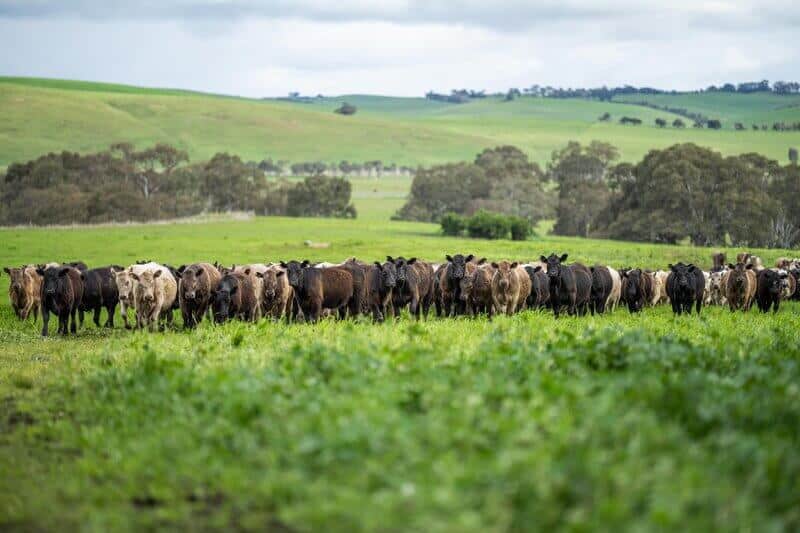The current state of the New Zealand farming market results from an intricate web of historical events, economic influences, and policy decisions. From its early agricultural roots to the rise of commodity-driven systems, the New Zealand farming market has changed drastically over the last 250 years to what we see today.
The New Zealand farming industry is firmly in the crosshairs of four intersecting trends. Rising input and finance costs, impending regulatory changes, and, most recently, decreasing commodity prices make farming increasingly complex and less profitable and, in some cases, push farming operations into the red.
The typical solutions, such as technological advancements, better stock management, better genetics, better nutrition, better seed, etc., or simply producing more, do not address the underlying problems. Production is not a tap that can be turned on and off, and increasing production with a farming model that is no longer scalable makes things worse.
What we need are responses, not solutions.
And even if we are looking for solutions, surely an excellent place to start would be identifying the problems rather than focusing on the symptoms.
But what if the ladder is leaning against the wrong wall?
Have we identified the actual problem?
And if so, are we solving the problem we have identified?
A fundamental shift is required to move beyond mere solutions towards proactive responses. We need to put control back into the hands of those managing the land, not those living off their efforts. We need to stop our farmers from being farmed.
The pitfalls of a commoditised food system
The obvious problem is that a commoditised food system focuses on maximising production at the lowest possible cost, often at the expense of all other considerations.
In New Zealand agriculture, success is predominantly measured by metrics centred solely on output, such as kilograms of milk solids or meat production per hectare. All output-focused metrics and payments are then aligned with these measures. This narrow focus creates a vicious cycle that traps farmers in a perpetual struggle. They find themselves burdened by escalating debt, increasing reliance on expensive inputs, and the relentless pursuit of higher production.
Higher production also comes with its downfalls. More production means more supply, and in line with the simple rules of economics, more supply means less demand which in turn results in a lower value of the product. This is a trap, and even though many farmers know it, they feel caught in the system, too embedded in it to chart a way out. But there is a way out for those willing to make a change.
Regenerative farming: a pragmatic alternative
Instead of continuing with the conventional mindset, what if we focused on a set of desired outcomes that enable farming within the biophysical limits of our natural ecosystems?
What if, by focusing on the potential of the land, farmers could ensure compliance with regulations, reduce dependence on external inputs, foster diverse pastures, and nurture thriving, naturally self-sustaining on-farm ecosystems?
This approach should put ‘the fun’ back into farming, returning the intrinsic joy and fulfilment from working the land while remaining profitable per hectare. Regenerative agriculture, which has progressively gained popularity worldwide, offers an alternative pathway beyond traditional thinking and practices. It strives to mimic the inherent wisdom of natural systems.
Just the mention of ‘regenerative’ farming provokes polarising responses, either staunch opposition or radical evangelism.
In reality, becoming more ‘regenerative’ is less about planting sunflowers in the front paddock and more about being guided by some common-sense principles. These principles include minimising inputs, keeping the soil covered year-round, minimising soil disturbance, creating diversity, and incorporating animals into land management. These principles become the decision-making lens within an individual farming context to help move towards a series of desired outcomes.

Overcoming resistance and embracing progress
The introduction of regenerative farming challenges the conventional model and, therefore, the interests of vested stakeholders. The existing linear supply chain, designed primarily for maximum production and profit for suppliers, processors, bankers, and marketers, fails to prioritise the holistic well-being of farmers.
It’s not surprising then that the ‘regenerative’ movement has ruffled some feathers and attracted outright disdain from others. But ruffled feathers or not, supporters believe a regenerative approach allows farmers to view their operations through a fresh lens. It encourages them to embrace change, guided by principles that focus on the health of the land and the people who live on it.
In regenerative agriculture, you start where you are (which is the only place you can start from) and measure improvements in land health through Ecological Outcome Verification (EOV) to ensure you move in the desired direction. There is no threshold or endpoint for ‘regenerative’; only potential exists. This lack of pre-defined parameters is why some have struggled to understand, let alone define it.
The New Zealand farming market’s focus on increasing production has created a challenging environment for farmers. However, with the growing emphasis on regenerative farming practices, there is an opportunity to reshape the industry. By embracing holistic approaches, farmers can navigate the challenges they face today and build a healthier future for their land, their families and their communities, and perhaps reduce the impact of the four converging trends that threaten farmers’ livelihoods today.
If you want to begin to farm regeneratively, contact us today to learn how.



